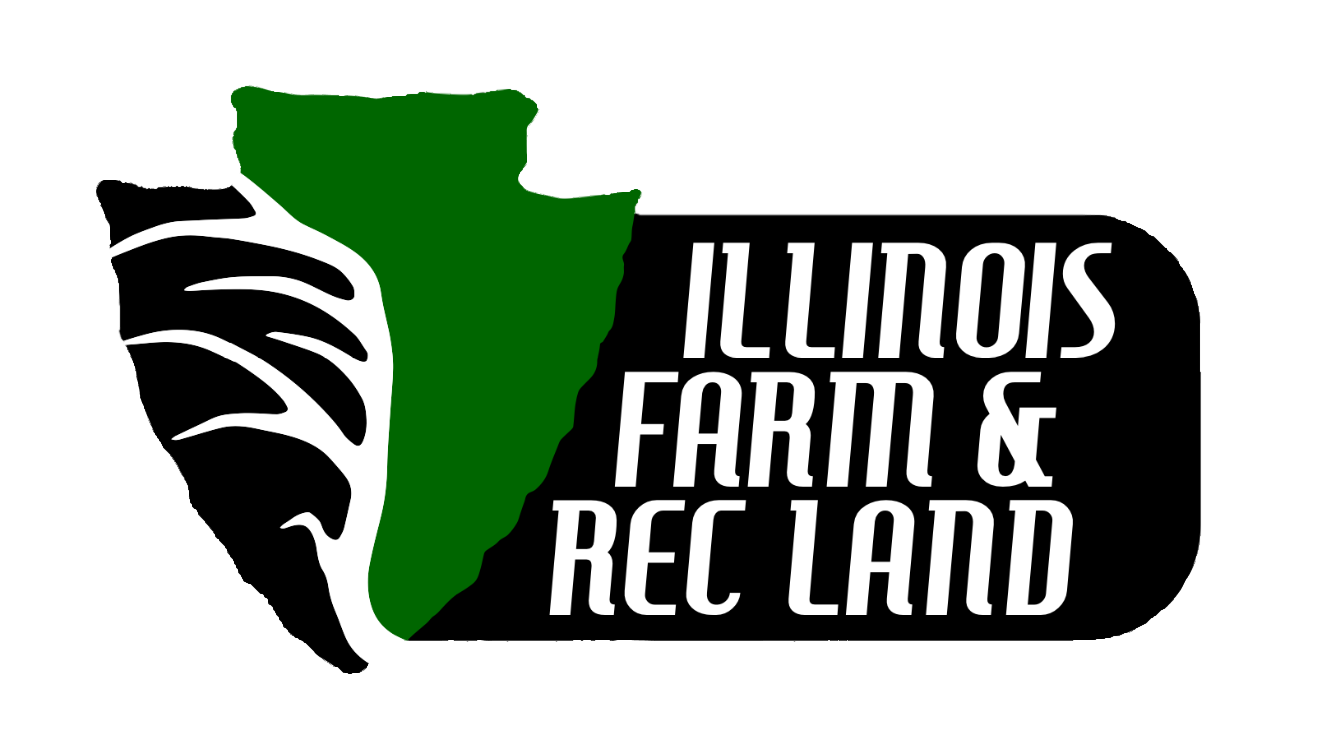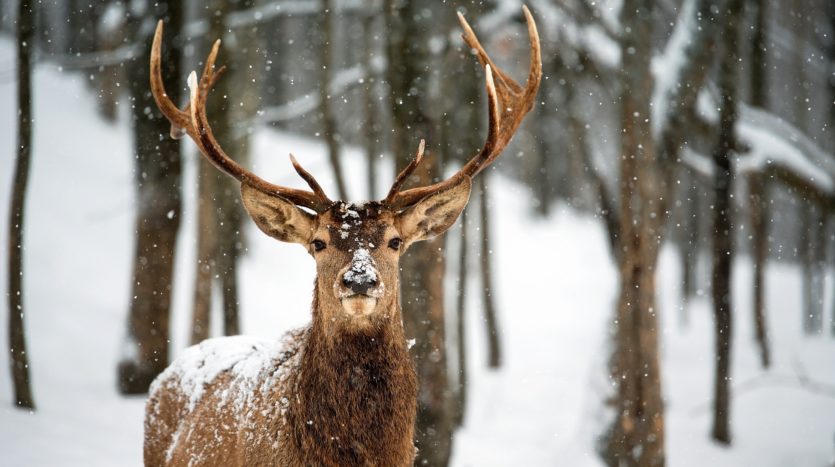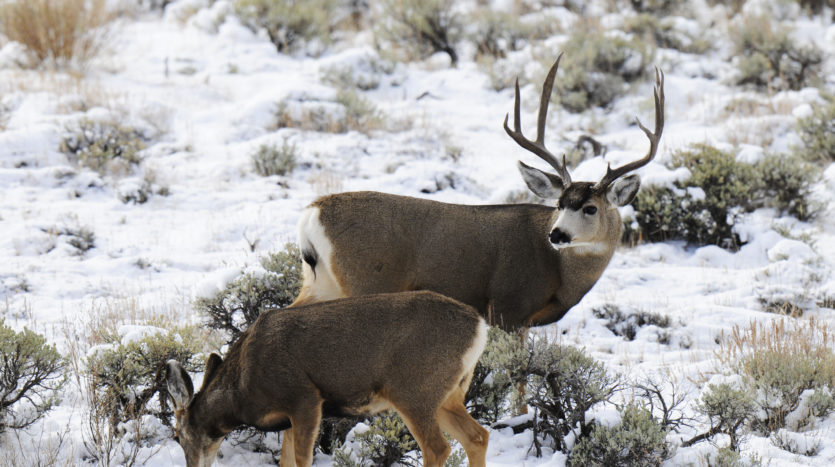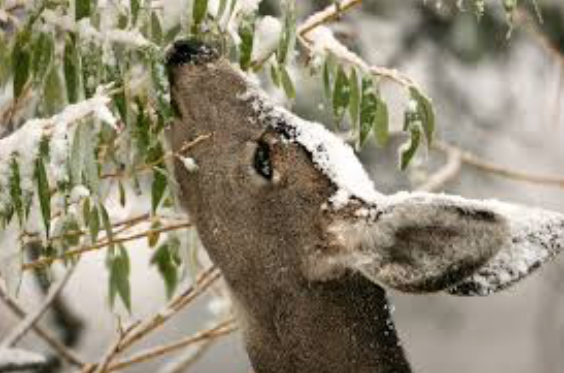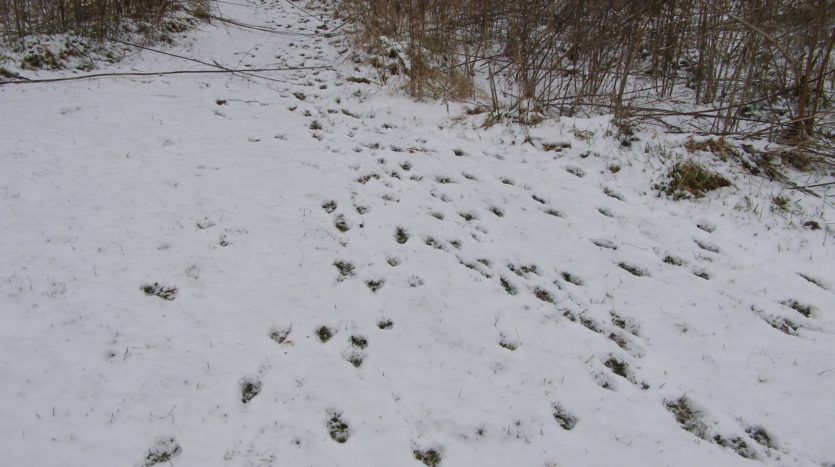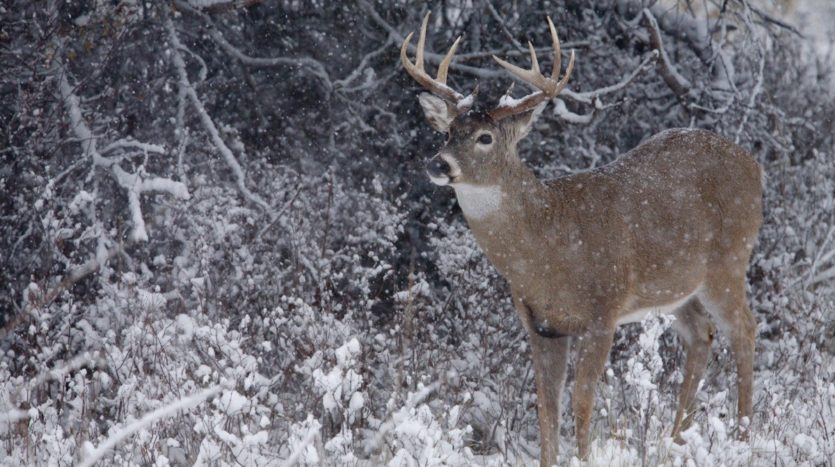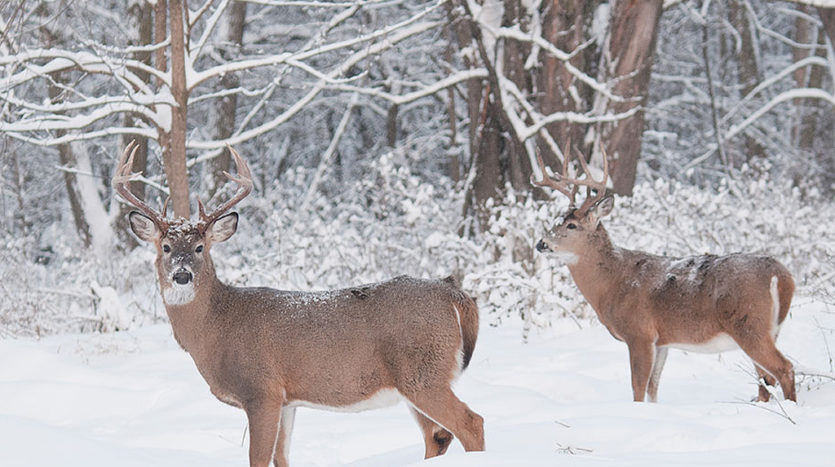A complete guide to late winter land and population management and scouting.
Winter Land Maintenance
For those of us who live in areas where winters are long and hunting seasons short, you quickly learn to plan ahead. Here are some things you can do right now to manage your land and wildlife population and scout for deer to make sure you are ready to make the most of your hunting property before another deer season is upon you.
These easy to follow tips will maximize your deer population and make your land more wildlife friendly while giving you insight about your specific deer population behavior.
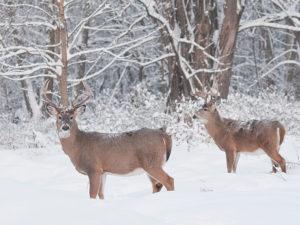
Boost deer health in winter
As land managers, we must take a look at things we can improve on our property to prevent deer from facing stress during harsh winters. Having adequate winter habitat and supplemental feed should be the primary goal. Here in the Midwest, having coniferous cover helps deer escape from brutal winter conditions, but that doesn’t always mean adequate food is readily available. The winter diet of white-tailed deer usually consists of woody twigs, white-cedar foliage, tree buds, and waste grain. With farming operations becoming more and more efficient, the waste grain that was once plentiful in farm fields is now severely reduced. We have two choices to keep the deer herd healthy: add more nutrition to the environment or remove more deer. We would rather see more deer while hunting so we lean toward keeping more deer and providing adequate food and cover for them.
Improve land conditions to increase deer population – within reason
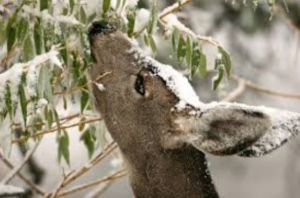
However, over-improved deer habitats can be nearly impossible to hunt. Too many antlerless deer over-consume high quality food plantings, take up space, and in the end bucks are pressured off the land to find calmer pastures. Sure, a buck may come cruising through during the rut, or become a night-time star on a landowner’s trail cams, but his core daytime habitat is somewhere else. And that is where huge problems arise!
With a little effort, you can create more areas that offer food and cover to increase your population. Deer are creatures of edge. While they do venture through big tracts of timber, they spend the majority of their time near the edges. You can improve the edges on your property with a few hours on a chainsaw doing some winter land maintenance. These transition areas between open fields and hardwoods offer an abundance of food in the warm season and browse during the late winter. By doing this, you can create more areas on your property that offer food that equals cover!
Go With a Pro
If you plan on any moderate to large-scale cutting, hire a licensed forester. Some states may require this. These professionals will cruise your land and determine existing conditions. Then, they will write a prescription for how much and what type of timber to cut. It’s important that you identify your goals up front so they can customize their prescription to best meet these goals.
 Scout for deer in late winter
Scout for deer in late winter
There are plenty of things we can do as hunters to fill the gap and ultimately help us on opening day next fall. One thing will most teach you about your specific deer herd or property: winter deer scouting.
Most hunters associate deer scouting as only a fall activity and maybe a late summer one too. They envision glassing fields for bachelor bucks in August or walking around a couple days before season starts to find fresh deer sign. Many don’t realize the volume of information you can learn from a single winter deer scouting trip. The best part is that, unlike summer scouting, you don’t have to worry about spooking or bumping deer. When they’re happily crunching on acorns in autumn’s soft light, they’ll have forgotten or forgiven any intrusion that happened half a year ago.
If you have very hard winters where you live, whitetails tend to yard up in some places where they typically might not go during the hunting season. For example, in cold weather and deep snow, deer will undoubtedly try to locate dense stands of conifers (cedar, spruce, pines, etc.) to rest, where there is typically less snow and some protection from the elements. If you find one of these spots, it’s nice to know, but take it with a grain of salt as far as how it can help you when you have a bow in your hands.
Here are some deer scouting tips to get you outdoors this weekend.
So when exactly does winter deer scouting occur? The most ideal situation is post season deer scouting, where you literally go out the day after your season closes or the last day you know you’ll be able to hunt. That way, you can almost get a real-time snapshot of deer activity during the hunting season. But you can still collect important clues if you wait until March.
Having snow on the ground is a bonus in that it makes tracking deer so much easier. You can follow deer trails with ease with even a dusting of snow covering the leaves. Ideally, get out in the woods a couple days after a snow event, which is enough time to have the deer reveal their daily patterns, yet short enough of a timeframe to not have trails crisscrossing everywhere after a couple weeks of no snow.
